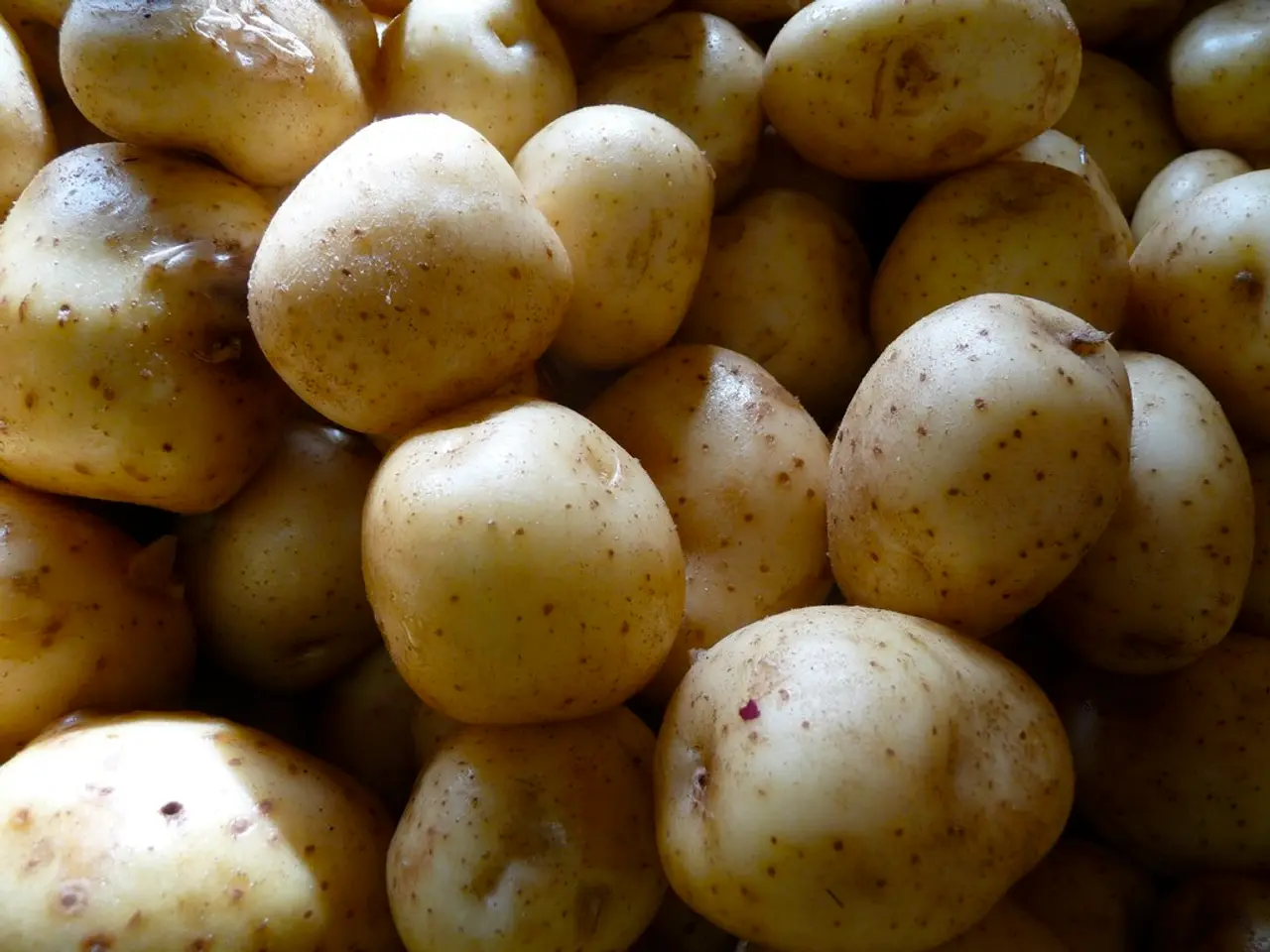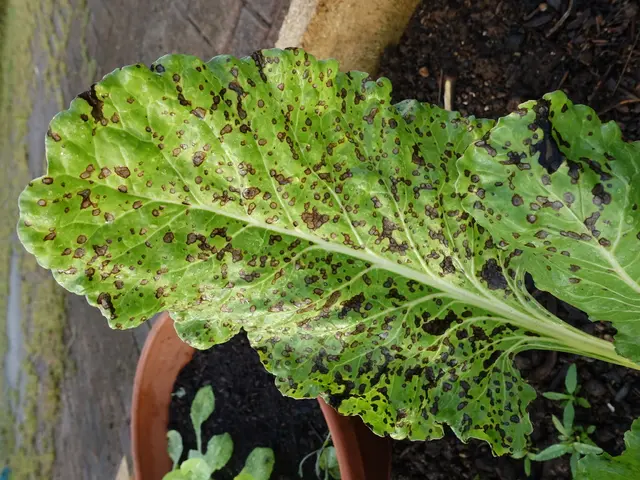Timing Fertilization for Maximized Sweet Potato Growth and Harvest
In the world of gardening, timing and care are crucial when it comes to growing sweet potatoes. These root vegetables mature in three to four months after planting, and they are ready to be harvested when the leaves yellow and the tubers fill your hand comfortably [1].
To ensure maximum yield, a balanced approach to fertilization and soil management is essential. Here are some key recommendations:
1. **Basal Fertilization**: Apply the entire phosphorus requirement, half the nitrogen, and about a quarter of the potassium before or at planting. A balanced fertilizer such as 5-10-10 (N-P-K) can be effective for this stage. This can be done by broadcasting or placing fertilizer in rows [1][3].
2. **Split Applications**: Divide the remaining nitrogen and potassium into two side-dressings during the growing season: the first 4-6 weeks after transplanting and the second 6 weeks later. This helps maintain a steady nutrient supply as the plant develops, supporting vigorous vine growth and tuber formation [1].
3. **Soil pH Management**: Maintain soil pH between 5.5 and 6.5, which is optimal for sweet potato nutrient absorption. Lime or dolomite may be added pre-planting to correct acidic soils. Gypsum can supply additional calcium if needed [1].
4. **Micronutrients**: Monitor and apply micronutrients like copper, zinc, magnesium, boron, and iron through soil or foliar feeding if deficiency symptoms appear or tissue analysis indicates low levels [1].
5. **Organic Matter**: Incorporate well-rotted manure or matured compost into the soil about two months before planting to improve fertility and soil structure, either as a supplement or alternative to chemical fertilizers [1][3].
6. **Fertigation**: For producers with drip irrigation systems, applying soluble fertilizers through fertigation allows gradual, precise nutrient delivery matching the plants’ uptake capacity [1].
7. **Soil Testing**: Conduct soil tests a few months before planting to tailor fertilizer rates to existing soil fertility and texture. Sandy soils often require higher fertilizer rates and split top dressings due to lower nutrient retention [3].
8. **Water and Fertilizer Timing**: Ensure adequate irrigation during fertilizer application to promote nutrient uptake, especially during the critical first 30-60 days of growth to avoid water stress that can limit nutrient absorption and yield [3].
Sidings the plants with fertilizer rich in potassium helps the sweet potatoes to bulk up and enhances the taste, but excessive nitrogen should be avoided as it promotes vine growth at the expense of the tubers [2].
Choosing the right variety is also vital. Popular choices include orange-fleshed varieties like Beauregard and Jewel, which are great for baking and mashing, and the Japanese sweet potato, which has a creamy texture and is excellent for roasting [2].
Regular watering is essential, especially during the first few weeks after transplanting and in dry climates. Early morning watering is recommended as it allows the moisture to penetrate deeply before the heat of the day evaporates it [4].
When growing sweet potatoes in containers, using a light, sandy potting mix can help with drainage. Plant slips about 4 inches deep, 18-36 inches apart, and in loose, mounded soil [5].
In summary, with the right timing, fertilization, and care, sweet potatoes can thrive and provide a bountiful harvest. Whether you're a seasoned gardener or just starting out, following these guidelines will help you grow delicious, nutritious sweet potatoes in your garden.
References: [1] University of Florida IFAS Extension. (n.d.). Sweet Potatoes. Retrieved from https://edis.ifas.ufl.edu/pdffiles/HS/HS01500.pdf [2] North Carolina State University Cooperative Extension. (n.d.). Sweet Potatoes. Retrieved from https://content.ces.ncsu.edu/sweet-potatoes [3] University of Georgia Cooperative Extension. (n.d.). Sweet Potatoes. Retrieved from https://extension.uga.edu/publications/detail.html?number=C1133 [4] Texas A&M AgriLife Extension Service. (n.d.). Sweet Potatoes. Retrieved from https://aggie-horticulture.tamu.edu/galveston/sweetpotato/ [5] University of Vermont Extension. (n.d.). Growing Sweet Potatoes. Retrieved from https://www.uvm.edu/extension/crops/growing-sweet-potatoes
A balanced home-and-garden lifestyle that incorporates gardening can lead to a successful harvest of sweet potatoes. The application of basal fertilization, split applications, maintaining soil pH, and supplying micronutrients can all contribute to a bountiful sweet potato yield.








